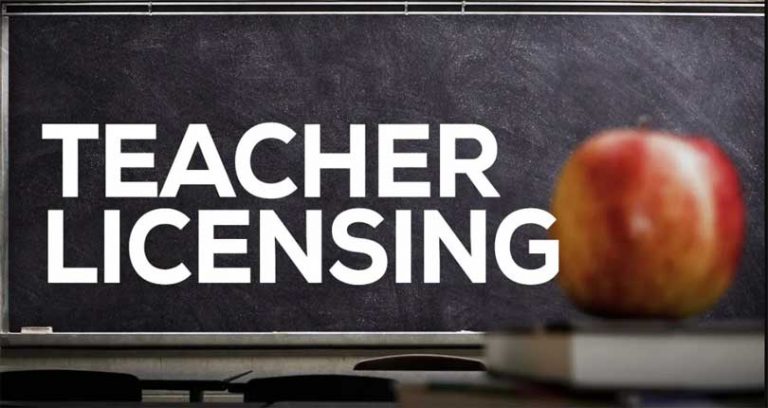
The fact is that Education sector in Sindh has been left to decay and decline and those at helm of the affair have fattened and flourished on the cost of this sector.
Gulsher Panhwer
On February 11, 2022 media reported Minister for Education & Culture, Sindh, Sardar Shah, saying that “the government plans on introducing licenses for teachers of schools and colleges across the province”.
The minister believes that the issuing license to the teachers is solution to what ails the education in Sindh. On social media teachers and their supporters have reacted strongly, arguing that teacher training certificates like PTC, CT, and B.Ed. & M. Ed are equivalent to license. The Minister is being firefly censured for putting psychological pressure on the teachers through such uncalled for statements.
Why the New Policy of License?
Recently, Dr. Murad Raas, the federal minister of education has told that the government is planning to introduce the new policy in the education system according to which the teachers will be provided the teaching license to teach in Pakistan. He added the words in his speech that if doctors and lawyers are required to obtain a license to start their professional career then why teachers are not required to do that. The minister said that the action is being taken to offer the quality education system throughout the country and it is the initial step towards the reforms of education in Pakistan. (Media Report)
Malice in education department in Sindh is deep and needs surgical solution, not the cosmetic measures of issuing statements.
The fact is that Education sector in Sindh has been left to decay and decline and those at helm of the affair have fattened and flourished on the cost of this sector.
Successive education policies put high literacy targets but after more than seven decades our literacy rate hovers around 60 percent, whereas female literacy rate in rural Sindh is pitiable 19 percent.
In response to media and civil society organizations highlighting ailment in Education of Sindh including thousands of ghost schools and ghost teachers (schools and teachers on paper only), the Sindh School Education and Literacy Department shut down 4,901 non-viable schools in different districts of the province in January 20202. This 4901 nonviable schools might be tip of iceberg, what happened to ghost school and ghost teachers nobody knows.
These “non-viable schools “were those which were opened from 1990s onwards haphazardly as a political favors to the landlords in Rural Sindh. In majority cases in small village with 5/10 households 3 to 5 schools were opened. This step destroyed once properly and optimally functioning school system where in the radius of 1 to2 km a school with average enrolment of 200 pupils and 8, to 10 teachers taught very conveniently and if one or more than one teacher was on leave or retired, the school functioned smoothly. But after mushrooming of one teacher unfeasible schools in smaller villages with low enrolment of 3 to 5 pupils in such schools, whenever single teacher going on leave, retirement or going to attend training etc., such one-teacher schools went close.
Slowly and gradually more and more teachers started abandoning their basic duty and joined ranks of diehard political worker and office bears of ruling party or joined NGOs and media. Still others opted for private business and some were hanging over in towns and cities aimlessly like delinquent children. The role of teacher union also deteriorated from an education-friendly representative bodies arranging co and extracurricular activities to protectors of the absentee teachers.
The prestige of education officialdom being promoted and appointed on political ground also declined. Monitoring, supervision and evaluation became a farce. The corrupt official pampered the absentee teachers because of the latter’s political connections and harassed few dedicated teachers on duty.
The scandals of highly corrupt practices started surfacing where education officialdom were alleged to siphon millions and billions of rupees through fake budget of fake teachers and fake schools known as ghost teachers and ghost schools. Steps were taken but they were too little and too late like “Sindh government’s removal of 1459 ghost schools from education department records”, again this figure of 1459 might be minuscule of the actual figure of ghost schools and ghost teachers.
In every field, quality is followed by quantity. In education it was obligatory for state to provide easy access to education to all school age going children. But despite big claims and constitutional provision (article 25-A, which guarantees free education from grade 1 to 10), 6.5 million children in Sindh are not attending schools. Chief Minister has himself acknowledged that “40 percent of children are out of school in Sindh”.
If plethora of religious schools (having many shortcomings) are functioning on no or limited resources, why government with enormous financial and human resources is faltering and has miserably failed in meeting its constitutional responsibility of providing access to quality education to all children.
The policy analysts and experts cry hoarse about lack of resource or low budgetary allocation to education. There is constant demand to increase the allocation to education from 5 or 8 percent of GDP. But experience has proved that access to education as well as standard of education further declines with pooling of more and more financial resources from World Bank and other multi and bilateral donors or credit providers.
There is constant demand that private tuition culture by on-service teachers should be banned or elite in Sindh should send their children to public education institutions rather than expensive private schools. This proposition believes that when the elite including officialdom’s children would be in public education institution, they might have stake and would truly make efforts to raise the standard of the education. But this suggestion is falling on deaf eaters because it is in interest of elite class in Sindh to avail quality education in private education institution and use public education sector as golden hen to grease the luxurious life by exploiting the resources from the public education and keeping the children from lower class at bay from competing their privileged children in high paid job market.
Sindh Education foundation (SEF) was supposed to serve the underprivileged segments in remote areas of Sindh through committed organizations and individuals. But as the decaying system fails every well-intentioned attempt to correct the malice, so same is true with SEF. With rare islands of excellence in both public education and SEF school system, the overall performance of the schools by SEF is not impressive. In some cases, the quality of instructions and teacher behavior is worse than government schools.
__________________
 Gulsher Panhwer is a freelance writer mostly touching the environmental, cultural and such other issues. He can be reached at gulsherp@yahoo.com
Gulsher Panhwer is a freelance writer mostly touching the environmental, cultural and such other issues. He can be reached at gulsherp@yahoo.com